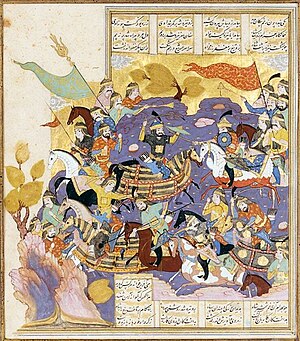| Millennium: | 1st millennium |
|---|---|
| Centuries: | |
| Decades: | |
| Years: | |
| 590 by topic |
|---|
| Leaders |
| Categories |
| Gregorian calendar | 590 DXC |
| Ab urbe condita | 1343 |
| Armenian calendar | 39 ԹՎ ԼԹ |
| Assyrian calendar | 5340 |
| Balinese saka calendar | 511–512 |
| Bengali calendar | −4 – −3 |
| Berber calendar | 1540 |
| Buddhist calendar | 1134 |
| Burmese calendar | −48 |
| Byzantine calendar | 6098–6099 |
| Chinese calendar | 己酉年 (Earth Rooster) 3287 or 3080 — to — 庚戌年 (Metal Dog) 3288 or 3081 |
| Coptic calendar | 306–307 |
| Discordian calendar | 1756 |
| Ethiopian calendar | 582–583 |
| Hebrew calendar | 4350–4351 |
| Hindu calendars | |
| - Vikram Samvat | 646–647 |
| - Shaka Samvat | 511–512 |
| - Kali Yuga | 3690–3691 |
| Holocene calendar | 10590 |
| Iranian calendar | 32 BP – 31 BP |
| Islamic calendar | 33 BH – 32 BH |
| Javanese calendar | 479–480 |
| Julian calendar | 590 DXC |
| Korean calendar | 2923 |
| Minguo calendar | 1322 before ROC 民前1322年 |
| Nanakshahi calendar | −878 |
| Seleucid era | 901/902 AG |
| Thai solar calendar | 1132–1133 |
| Tibetan calendar | 阴土鸡年 (female Earth-Rooster) 716 or 335 or −437 — to — 阳金狗年 (male Iron-Dog) 717 or 336 or −436 |

Year 590 ( DXC ) was a common year starting on Sunday of the Julian calendar. The denomination 590 for this year has been used since the early medieval period, when the Anno Domini calendar era became the prevalent method in Europe for naming years.